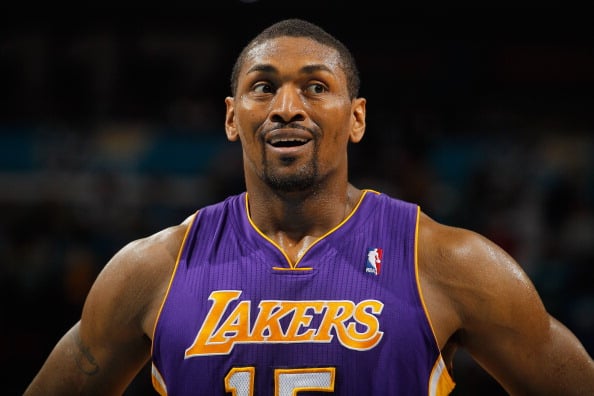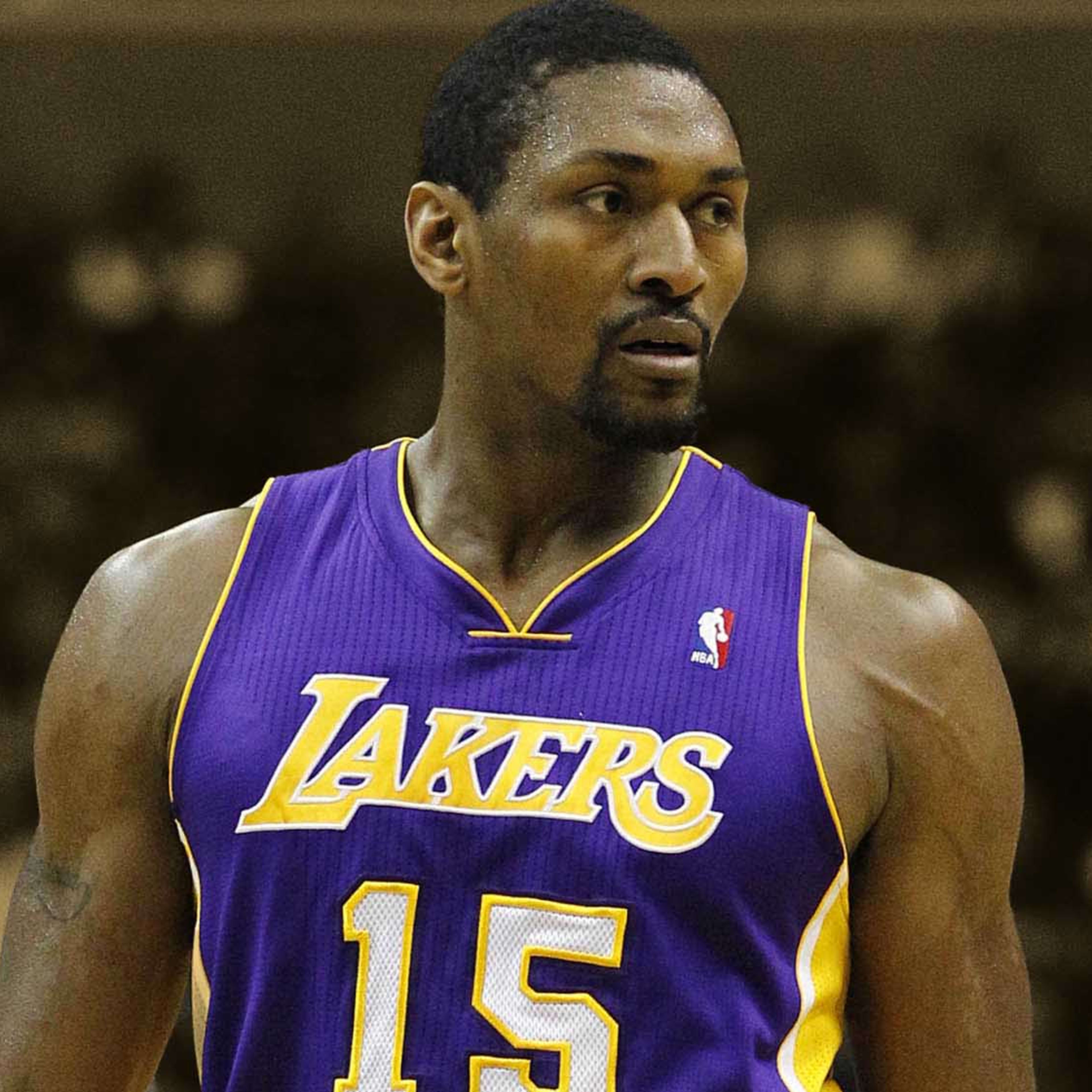The Evolution of Basketball: Ron Artest’s Perspective on Skill, Toughness, and the Impact of Rule Changes
In the ever-evolving landscape of professional basketball, few voices carry as much weight and credibility as that of Ron Artest, the former NBA star known for his fierce competitiveness and physical style of play.
Recently, Artest shared his candid thoughts on the current state of the game, highlighting a fascinating dichotomy: today’s players are undeniably more skilled than ever before, yet they often lack the toughness that characterized earlier generations.
His comments have sparked widespread discussion among fans, analysts, and players alike, prompting a deeper examination of how rule changes over the years have fundamentally transformed basketball.
The Rise of Skill in Modern Basketball

When analyzing Artest’s comments, it’s impossible to ignore the remarkable skill level displayed by today’s NBA athletes.
From three-point shooting to ball-handling, passing, and defensive versatility, the modern player is a marvel of athleticism and technique.
The game has shifted from a predominantly inside-oriented sport to a perimeter-focused spectacle, emphasizing shooting range and agility.
Advanced training methods, sports science, and a greater emphasis on skill development from a young age have contributed to this evolution.
Players like Stephen Curry, Kevin Durant, and Luka Doncic exemplify the new breed—athletes who can shoot from unimaginable distances, create their own shots, and execute complex plays with precision.
This heightened level of skill has made basketball more entertaining and competitive, attracting global audiences and inspiring a new generation of players.
The Decline of Toughness and Physicality?
However, Artest’s comments also point to a perceived decline in toughness—a trait that once defined the identity of many NBA legends.
The grit, physicality, and mental resilience that characterized players like Dennis Rodman, Charles Oakley, and Artest himself are often seen as less prominent today.
Critics argue that the modern game, while faster and more skillful, has become somewhat sanitized, with players avoiding contact and playing more cautiously to prevent injuries and avoid foul trouble.
This shift raises an important question: has the game become less physical, and if so, why?
Many attribute this change to the sweeping rule modifications implemented by the NBA over the past few decades, which have aimed to promote player safety and offensive flow but arguably at the expense of toughness.
The Role of Rule Changes in Shaping the Modern Game

The NBA has introduced numerous rule changes that have significantly altered the way basketball is played. Some of the most impactful include:
Hand-Checking Restrictions: The crackdown on hand-checking has made it more difficult for defenders to use physical contact to slow down offensive players, encouraging a more finesse-based defense.
Foul Rules and Flopping Penalties: Stricter foul calls and penalties for flopping have discouraged aggressive, physical defense, leading to a more perimeter-oriented game.
Three-Point Emphasis: The league’s increasing focus on three-point shooting has incentivized players to stay on the perimeter, often avoiding the contact that would come with driving to the basket.
Tactical Changes: The rise of positionless basketball and small-ball lineups have emphasized speed, spacing, and shooting, further reducing the physicality of the game.
These rule changes, while enhancing the entertainment value and safety of the sport, have also contributed to a style of play that prioritizes finesse over physicality.
Players are now more skilled in shooting and ball-handling but often less inclined or able to engage in the rugged, physical battles of earlier eras.
The Impact on Player Development and Identity
The transformation of the game has profound implications for player development and identity.
Young athletes are now trained to excel in shooting, agility, and basketball IQ, sometimes at the expense of strength and toughness.
Coaches emphasize skill drills that enhance finesse, while physical conditioning focuses on endurance and flexibility rather than brute strength.
This evolution has created a new archetype of basketball player—one who is highly skilled, versatile, and capable of executing complex plays but perhaps less inclined to engage in the gritty, physical confrontations that once defined the sport.
The Cultural and Psychological Dimensions

Beyond the physical aspects, the change in the game’s nature also influences the culture and psychology of players.
The emphasis on avoiding fouls and injuries has led to a more cautious approach, sometimes at the cost of aggression and mental toughness.
Meanwhile, the media and fan culture celebrate highlight-reel plays and scoring streaks, often overlooking the physical sacrifices and mental resilience required to play through adversity.
Artest’s perspective underscores a broader concern: the potential loss of a certain toughness that fosters resilience, grit, and mental fortitude—qualities that have historically been integral to basketball’s identity.
The Future of the Game: Balancing Skill and Toughness
As the NBA continues to evolve, the challenge lies in balancing the benefits of increased skill and entertainment with the preservation of toughness and physicality.
Some argue that rule adjustments should be carefully calibrated to allow for more physical play without compromising player safety.
Innovations in training, coaching, and officiating could help bridge the gap, fostering a style of play that values both finesse and resilience.
Moreover, embracing a diverse set of skills and physical attributes can help develop well-rounded players who excel in multiple facets of the game.
Conclusion
Ron Artest’s insights into the modern NBA highlight a critical conversation about the sport’s evolution.
While today’s players demonstrate extraordinary skill and finesse, there is an ongoing debate about whether the game has become too sanitized, losing some of the toughness that once made it so compelling.
The influence of rule changes has undeniably shaped this new era, making basketball faster, safer, and more skill-dependent.
As fans, players, and league officials reflect on this transformation, the goal should be to preserve the core values of resilience, grit, and toughness—qualities that have historically defined basketball’s enduring appeal. Striking the right balance will ensure that the game remains exciting, competitive, and true to its roots for generations to come.
News
Detroit Pistons Achieve Historic 10-Game Winning Streak for the First Time Since 2008, Cementing Their Dominance at the Top of the Eastern Conference
Detroit Pistons Achieve Historic 10-Game Winning Streak for the First Time Since 2008, Cementing Their Dominance at the Top of…
Eric Jerome Dickey’s ‘Friends and Lovers’ Transforms into an Exciting New Television Series: A Deep Dive into the Adaptation and Its Cultural Significance
Eric Jerome Dickey’s ‘Friends and Lovers’ Transforms into an Exciting New Television Series: A Deep Dive into the Adaptation and…
Michael Porter Jr. Dominates Stat Sheet to Lead Brooklyn Nets to Second Victory of the Season
Michael Porter Jr. Dominates Stat Sheet to Lead Brooklyn Nets to Second Victory of the Season In an electrifying display…
Debbie Allen Honored at the 16th Annual Governors Awards: A Night of Celebration for a Legendary Talent
Debbie Allen Honored at the 16th Annual Governors Awards: A Night of Celebration for a Legendary Talent Los Angeles, CA…
At 45, Destiny Finally Exposes Marsau’s Hidden Secrets: An In-Depth Investigation
At 45, Destiny Finally Exposes Marsau’s Hidden Secrets: An In-Depth Investigation In an era where social media and reality TV…
The truth Sara Gilbert tried to bury is finally out. What she’s facing now is every fan’s worst nightmare. You won’t believe how bad it’s gotten.
The truth Sara Gilbert tried to bury is finally out. What she’s facing now is every fan’s worst nightmare. You…
End of content
No more pages to load












